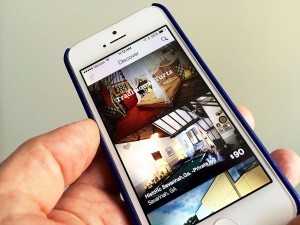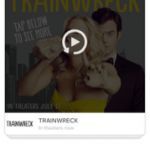Erik Qualman's Blog, page 530
July 22, 2015
Chryslers can be hacked over the Internet

CNN – A flaw in several Chrysler models lets hackers remotely control them over the Internet, posing an unprecedented danger for American drivers.
Hackers can cut the brakes, shut down the engine, drive it off the road, or make all the electronics go haywire.
Jeep Cherokees, Chrysler 200s, Dodge Rams, and several other vehicles are vulnerable to such attacks, according to research revealed Tuesday.
The core problem? A flaw in the wireless service Uconnect that connects these cars to the Sprint cellphone network.
The researchers, Charlie Miller and Chris Valasek, first demonstrated the hack to Wired Magazine by remotely hijacking a Jeep Cherokee driven by a news reporter.
“Right now I could do that to every [Chrysler] car in the United States on the Sprint network,” Miller told CNNMoney on Tuesday.
The researchers have concluded that the vulnerable Chrysler models are those from late 2013, all of 2014 and early 2015 that are loaded with Uconnect and the full navigation displays.
But Miller said there could be other vehicles with this weakness that he isn’t aware of. The researchers did not test any cars made by Ford, General Motors or others — but only because they’re a tiny team that lacks the funding to keep buying cars and the time to break into them.
Chrysler acknowledged the problem to CNNMoney on Tuesday. Chrysler said it left an unused computer communication channel open that unknowingly granted outside access to car controls. It is now offering a software upgrade that it says customers should install “at their earliest convenience.”
But Chrysler didn’t refer to this as a recall — or say drivers are at risk.
“Similar to a smartphone or tablet, vehicle software can require updates for improved security protection,” the company said.
Miller and Valasek said they presented their research to Chrysler last October, allowing the company develop a fix. Miller said the company had been “very kind and responsive.”
Explaining the hack
Modern day cars are smartphones on wheels – and just like any computer, vulnerable to hackers. As CNNMoney has investigated in the past, the computers inside cars are still pretty “dumb.”
In 2013, Miller and Valasek demonstrated how they could hack a car while sitting inside it. At the time, they had to physically connect a laptop to a car’s dashboard.
Wireless connectivity — now standard in nearly every car — has upped the risk.
In this latest experiment, Miller and Valasek used a laptop to scan for any cars on the Sprint network that also use Uconnect.
In seconds, these researchers can tap into any car’s “infotainment system.” They can turn off the air conditioner, blast the radio volume, and change the navigation screen.
Once inside, they can then penetrate what’s supposed to be a guarded layer: the computer backbone of the car. They can control the brakes, steering wheel and accelerator.
In the past, auto suppliers and car makers have assured CNNMoney this crossover — from infotainment to core controls — was impossible.
The researchers noted that Sprint, as the network operator, is also in the position to block this kind of attack. Sprint did not tell CNNMoney whether it would do that on its own, but the company said it is “working with Chrysler to help them secure their vehicles.”
What’s next? On Tuesday, two U.S. senators introduced legislation to establish national safety and privacy standards for automobiles — and a rating system that tells you how safe a car is from cyberattacks.
Senators Edward Markey, of Massachusetts, and Richard Blumenthal, of Connecticut, call it the Security and Privacy in Your Car Act.
Next month, Miller and Valasek will reveal exactly how they hacked into the infotainment system, though not how they hijacked car controls.
Miller noted that it took him and his buddy nearly a year to figure this out. That should keep your average punk from figuring out how to do this — but only for a short while.
“It shouldn’t be possible,” Miller said. “I’m scared because you should not be able to attack cars remotely like this.”
Article by Jose Pagliery for CNN
[image error]
T-Mobile Continues to Conquer

T-Mobile, one of the nation’s largest mobile service network providers, has experienced major success in the past couple years due in large part to a brand relaunch in 2013. It is now known as America’s “Uncarrier”— a title that has disrupted the wireless communications industry with a bold statement and stance against competitors and most importantly, fits the needs of today’s mobile device consumers.
The company began with 33 million customers in 2013 when it rebranded and today, has 55 million and counting. T-mobile’s position of standing up for every US wireless consumer by calling out regular industry practices that are wrong and then providing the better alternative has made the brand reach complete success. With its daring mission, the Uncarrier is able to give customers benefits they really care about when it comes to mobile service such as eliminating annual service contracts, free data when roaming internationally and rollover of unused data.
There are key strategies revolving around social media and millennial appeal that have made T-Mobile unstoppable and a pioneer amongst its competitors. The brand was named the second-most socially devoted global brand in a study from Social Bakers because of an 86% response rate via social media accounts. It has truly tapped into social media as a go-to platform for consumer brand participation and user engagement.
As part of their continual Uncarrier campaign, T-Mobile has encouraged potential customers to “break up” with their current carriers by offering to pay for their contract cancellation fees and even help users customize a break-up letter to share via Facebook app. This is the type of user-generated content that is invaluable to both a company and its customers because of high engagement and retention rate potential. Over 80,000 breakup letters were posted, further fueling more visibility and triumph for the overall campaign.
T-Mobile also knows how to leverage its social media outlets to promote new partnering devices. The brand often rounds up its digital followers in enticing device launches, garnering participation in contests to win free gadgets such as the Galaxy Note 4.
Yet another way the company has forged a deeper consumer relationship is in its display of genuine interest and trust in their audience. The company takes to their social media followers and community, the biggest fans of the brand, to find their future work force, inviting them to apply for job opportunities at T-Mobile.
The common congruence to this mass appeal to T-Mobile is the goal towards freedom—freedom to voice consumer opinions through social media and freedom to have an unrestrictive carrier that puts no limits on the endless possibilities of life. This is the millennial mindset, and coincidentally and not so coincidentally, the millennial demographic happens to be the main target of users that use and need to be connected at all times whether it’s social media, messaging, calling, emailing or video chatting—and that’s where T-Mobile comes in.
T-mobile’s momentum is nowhere near stopping or slowing down. This past first quarter of 2015 marked the business’ eighth-consecutive quarter in which it gained more than a million users. It also generated $7.8 billion in total revenue for Q1, marking a 13.1% rise year-over-year. The strategy of connection and reach through social media interaction and the integral aspect that calls for their customers to partake in the banter in order to make it work, is what will sustain the growth and continue to solidify T-Mobile as the leader that’ll conquer the telecommunications industry in the long run.
[image error]
July 21, 2015
6 Great Apps That Rely Solely On Crowdsourcing

Both start-ups and established businesses are embracing crowdsourcing more than ever before. By cultivating the power, knowledge and creativity of other experts and consumers, it gives companies a good base on which to grow and sparks opportunities for new ideas to emerge.
Crowdsourcing is only just starting to get the attention it deserves. Its value to tech start-up companies is unmatched. As one of the only affordable options for small businesses it works so well, and can provide a good basis for a solid business plan, as long as you can get people interested and are filling a hole in the market.
Some businesses exist solely because of crowdsourcing. This is particularly evident in the app development arena – the reason being that it’s easier for people to share, interact and co-operate using their phones. App developers are truly cashing in though, because not only are they collating valuable information that users want, they’re doing it at no extra cost to themselves. Take a look these successful apps that rely solely on crowd sourcing.
Waze
One of the most successful crowd-powered start-ups is Waze. It’s an app that allows users to report traffic jams and automatically gives directions for the best route to take. Waze crowd sources information by measuring drivers speed to determine traffic jams and by asking users to report road closures.
Waze is also home to an active community of online map editors who ensure that the data in their areas is as up-to-date as possible. It’s a great app that proves a dedicated crowd is sometimes all a company needs.
Uber

Another successful app named Uber was built upon crowdsourcing, and offers users the chance to earn extra money in the process. The app connects people in need of a taxi with drivers going in that direction. They’ll pick the driver up and drop them off at an agreed location and in return the driver will get paid by the user automatically via Paypal.
It’s a handy app to have in the city – by bringing people together it cuts expenses for riders and helps drivers earn extra income.
Be My Eyes
This app relies on the good-hearted nature of society, and lends a helping hand to those who are sight impaired. It offers them help whenever they need it, and means they don’t have to excessively rely on individual family members or friends.
If a blind person needs assistance he’ll ask for it using the app, and if there’s a sighted person available close by who is signed up to the app, they’ll get a notification or call. Of course, they can decline if busy, but if they have a spare few minutes they can choose to lend their eyesight to someone in need.
Miflight
The Miflight app allows travellers to input their flight security waiting times so the next flier can have a better experience. No one likes waiting in line, so this crowd sourced service is pretty useful. Travellers update at various checkpoints in over 75 of the busiest global airports and 75 of the top airports in the US to make the travel experience more efficient and much less stressful.
 Airbnb
Airbnb
Airbnb’s whole business model is based on crowdsourcing – it’s essentially a travel website that allows individuals to let out their homes all over the world. If it wasn’t for them, there’d be no site. Like Uber, it brings together people wanting to earn money and those looking for a place to stay.
Over the past few years Airbnb’s popularity has increased significantly, with many travelers opting to book accommodation through the site, rather than book a package deal with more well-known holiday companies.
Placometer
Placemeter is an app that encourages citizens to take videos of their surroundings using their phones. Once signed up they send participants a suction cup to attach their old phones to the window to film the streets and popular landmarks below.
What does Placemeter do with this data? Well, they analyse traffic patterns, help businesses market better and inform consumers of waiting line times etc.
Weather signal
This last one comes in the form of a crowd-sourced weather map. The weather changes frequently, and often so fast we can’t keep up with it. However, WeatherSignal brings a new way of collecting weather data – by using the sensors in smartphones.
The sensors allow those who have the app to contribute data such as temperature, pressure, light intensity, magnetic flux and humidity to a network that will inform others of location based weather in real time. The aim of WeatherSignal is to create the most accurate localised weather map in the world.
So there you have it – six great apps that rely solely on crowdsourcing. These examples convey just how powerful crowdsourcing can be. This method of curation has helped transform many simple ideas into successful, working creations with minimal effort and cost involved. Not only that, crowdsourcing gives businesses a ready-made database of users and invaluable marketing that you couldn’t re-create.
Whatever you do, don’t underestimate the power of consumers when it comes to your start-up tech business, whether you’re developing an app or something else entirely.
[image error]
Is Social Networking Helping You Find a Retirement Venue?

Looking for a place to retire may not be as simple as it seems.
It’s not all about the beauty of the state, but many other factors come into play.
And according to a survey by Bankrate, Florida isn’t so tops anymore. More retirees are heading west.
The top 10 best states/cities according to this survey published in USA Today are:
1. Phoenix metro area, including Mesa and Scottsdale, AZ
2. Arlington/Alexandria, VA
3. Prescott, AZ
4. Tucson, AZ
5. Des Moines, IA
6. Denver, CO
7. Austin, TX
8. Cape Coral, FL
9. Colorado Springs, CO
10. Franklin, TN
Get Social on Retirement
As the following article “Best places to retire? Avoid the worst states to retire” looks at, are you doing all your research?
Very likely, you want to void the worst states to retire.
Bankrate did another survey on this, and found the following states to be the worst:
1. Arkansas
2. New York
3. Alaska
4. West Virginia
5. Louisiana
6. New Jersey
7. Hawaii
8. Kentucky
9. Missouri
10. Oregon
Some things that were taken into consideration:
• Tax rates – Of course, the lower the tax rate, the higher the draw.
• Levels of happiness – Retirees are looking for places where people are friendly and respectful.
• Health care – Strong healthcare is drawing retirees.
• Crime – Low crime rates gain more retirees.
• Weather – It seems the mountains and snow may be trumping the ocean and heat.
One way you can do some investigation on which place suites you is through social media.
You can:
• Ask your friends who have retired already. People love to offer their opinions on social media.
• Check out some images from Pinterest. Sure, people post the beautiful ones, not the ugly parts, but you can get a good feel of a place from some visuals.
• Contact some places through their social media sites. Whether you’re looking for a retirement community or just an area that fits your needs, don’t hesitate to reach out via social media.
• YouTube can help out in the financial aspects. You can find some excellent tutorials and explanations of all things financial.
• Follow some experts on Facebook and twitter for great advice on both where to retire and how to do it in the best way.
Retirement is an exciting time!
Let social media be among your guides and best of luck on your new endeavors!
Photo credit: Image courtesy of Mister GC at FreeDigitalPhotos.net
[image error]
July 20, 2015
PayPal Shares Pop 8.3 Percent Following eBay Split Valuing PayPal At More Than $50 Billion

TechCrunch – Everybody expected PayPal (NASDAQ:PYPL) to be worth more than eBay following its split with its parent company (NASDAQ:EBAY), but not that much. After a short period of trading on a “when issued” basis, PayPal is now officially an independent company. On its first day of trading, shares opened at $41.63, 8.3 percent above Friday’s last temporary closing price before its public introduction.
With shares trading at $41.63, it values the company at $50.8 billion, above eBay’s current intraday valuation of $34.5 billion. PayPal shares are now trading at $40.21 minutes after NASDAQ’s opening bell. Shares are still up 4.74 percent even with this small market correction.
As a reminder, shortly after PayPal’s first IPO, the company was acquired by eBay in July 2002 for $1.5 billion. The same company is now worth 33 times its last public valuation. Until now, PayPal has managed more than 18 billion transactions and over $1 trillion. It now has 165 million consumers in 200 countries.
In other words, PayPal is no longer the shiny new fintech startup. It’s a full-fledged finance heavyweight, ready to report quarterly earnings again. It faces competition from local giants, such as Alibaba’s Alipay, and newcomers, such as Stripe.
Today’s split is great news for the payment company, as it will give it more freedom to raise additional capital and acquire other companies. Now that PayPal is no longer just an eBay subsidiary, shareholders clearly demonstrate that they want to hold shares in PayPal, not eBay.
Moreover, PayPal’s executives can now issue bonds without going through eBay. It can also acquire companies using PayPal stock, and more. It’s going to be an interesting new journey for PayPal.
Article by Romain Dillet for TechCrunch
[image error]
Know Your Rights: Credit, Credit Reporting and Personal Finance Tips for Consumers

Your credit score and report are the closest thing, outside of a criminal record, that you are ever going to have to that “permanent record” all your teachers scared you about when you were in school. It is important that you know what goes into it, how it is scored and reported and–most importantly–what your rights are when it comes to your credit, how it is reported and what companies can and cannot do with that information.
Via pixabay.com
Finding solid intel on this is difficult. This is because many consumer credit and lending agencies would rather you not know what laws govern them. After all, if you don’t know what the rules are, you can’t really challenge them when they tell you what’s what, right? To get you started, here are the most important rights and legal details you need to know to keep your financial identity under control.
#1. You Are Entitled to Your Report
The credit reporting agencies (and the agencies that contract through them) are profit-dependent. To keep them from gauging consumers, the federal government has a law in place that allows every consumer to gain access to all three major reports free of charge once every twelve months. If you want to pay for credit monitoring and extra reports, that’s up to you. Once a year, though, you can check on your progress and dispute any mistakes for free.
#2. You Get to Know Everything
If you apply for a loan or line of credit and are denied, the lender or creditor must tell you exactly why. More importantly they must supply their reasons in writing within a very specific window of time. If you do not receive this information, you have sixty days to request it and it must be provided free of charge and in a timely manner. The information contained in the report must be accurate and verifiable. Lenders, creditors, banks, etc. are not allowed to distribute false information about consumers and if they get caught doing so, the penalties are steep.
#3. You Can Challenge the Information
This is why, if you see something on your credit report or in the information provided to you in a denial letter that is wrong, you are allowed to challenge that information with the credit bureau. If you can provide or they can find proof that the information is inaccurate, the credit bureau is legally obligated to remove that item from your report. This is why it is important to read through your reports thoroughly every year, to catch mistakes before they cost you.
#4. Chain of Custody Matters
A lot of creditors and lenders will sell bad debts to collection agencies and junk debt buyers. These agencies and buyers will then try to make your life miserable in an attempt to get even a partial payment on these debts. Their goal is to get you to pay them to leave you alone. Instead, demand proof that they are legally entitled to collect the debt they insist you owe. They have to prove that they purchased the debt legally. If they can’t, you don’t have to pay them. In fact, if they can’t or refuse, they are likely scam artists posing as collectors and it is better that you don’t pay them anything.
#5. You are Entitled to Respect
Lenders, creditors, and collection agencies cannot do whatever they want in an attempt to get payments from you. There are strict rules under the Fair Credit and Reporting Act that dictate exactly what lenders, creditors and collection agents are allowed to do and say in their attempts to get you to pay your debts. It is important that you know what they are.
#6. You Can Report Them
If a creditor, lender or collection agent violates any of the rules in the FCRA, says Creditrepair.com, the penalties for that are steep. Not only can you report them to the FTC for the violation, they will often owe you money if you catch them or report them for doing it. That’s right: if they call you after hours, use threatening or abusive language, distribute your information, etc? They have to pay you money. Even better, they have to pay you for every instance in which a rule was broken. So learn these rules! It could be profitable!
Knowing your rights is important. It is what will help you keep your wits when collectors are calling all day or if a scam artist tries to take advantage of you. Hopefully the information here will give you a good start on making sure you don’t get taken advantage of!
[image error]
Tinder: Brands don’t be Scared

The mobile dating app launched it’s first ads a couple months ago and since then has expanded into testing more video ads. Since Budweiser, the app has also included ads such as movie trailers for Trainwreck, which allows the mobile app users to:
View the trailer
See movie times nearby
Purchase tickets
Share

The ad experience has increased over time, where in the beginning brands had to create a profile and only a link was provided out if the user swiped right. This time the user doesn’t even have to swipe (or doesn’t have a chance to), before the video starts to auto-play. This allows the brand more viewers and an increased opportunity to get in front of the app’s users.
When a user signs up they reveal they typically reveal their age, location, and may also connect to Facebook to see which friends they have in common. One of the biggest assets that Tinder has about its users is their location. In turn allowing for opportunities for location based advertising and in app purchase.
So in the case of the movie trailer, the opportunity to show movie times within hours and miles of that user is optimal. It increases the drive to purchase, especially since you can purchase from within the app. The seamless experience being offered is clutch and will result in less drop off than previous, because the content delivered is within the same experience (as Facebook does with its ads, content publishing, etc).
Some may be dismayed because Tinder was first known as a “sketchy” dating app. But having been around for a while, it’s not just another dating app. The app has gained a tremendous userbase of over 50M active users per month. So the key isn’t whether people are there (they are), it’s whether your brand is right for the app. The recent advertisers – the Trainwreck trailer makes sense because it could be a potential date event, and Budweiser is a beverage you may have on your date. So, ensure your brand is contextually relevant to the Tinder app and audience behaviors who are:
mobile savvy
want instant consumption
to meet and discover new people and experiences
Still have questions or not sure if your brand is the right fit? Ask us more in the comments below.
[image error]
Microsoft: Here’s why you should upgrade to Windows 10

CNET – Microsoft has kicked off a new series of videos and blog posts that aim to explain why you should upgrade to Windows 10.
Launched on Sunday, the initial blog post authored by the Windows Team focuses on the Start menu, which is alive and well once again inWindows 10 but with a few twists. The team highlights the new Start menu by saying it’s back in a “more robust and expanded format” with access to your most frequently used apps, Windows settings and space to add live tiles.
Following the feeble response to Windows 8, Microsoft needs Windows 10 to be a hit. As such, the company has been fine-tuning its new OS since October 2014 with ongoing new versions, or builds, of its current Technical Preview based in part on user feedback. One way Microsoft has been enhancing Windows 10 is by bringing back some of the features from Windows 7 that people have missed. And Numero Uno on the list is the Start menu. Even Microsoft now realizes it made a major boo boo by killing the Start menu in Windows 8 in favor of the Start screen. People don’t like change. And the Start menu was a familiar way of working. Now in Windows 10, the Start menu has returned, but with some of the Windows 8 flair.
So what goodies will you find in the new Start menu that Microsoft thinks you’ll love?
The apps you use most most frequently automatically show up on the menu. Windows 7 has a similar effect. The menu also offers a spot to discover newly-installed apps as well as suggested apps based on the software you currently run. A section called Places provides quick access to File Explorer for managing your files, the Power button for shutting down or restarting Windows and the Settings command for tweaking your Windows options.http://www.cnet.com/news/microsoft-he...
Perhaps what’s most different in the new Start menu is that it incorporates the tiles from the Windows Start screen. So you can pin your favorite Windows apps to the right pane of the Start menu and view live tiles for News, Weather and other apps that show you up-to-the minute information. With the new menu, Microsoft is blending elements of Windows 7 and Windows 8.1, an approach designed to appeal to people who like the traditional menu as well as those who prefer the Start screen.
In its blog, the Windows Team also attempts to reassure Windows 7 and 8.1 users concerned about upgrading to Windows 10 that they’re in good hands.
“Over 5 million Windows Insiders have been helping us test Windows 10 and make it our best Windows ever,” the team said. “They’re also helping us make the upgrade process smooth and easy. Upgrade preserves your documents and files so you don’t need to worry about things getting lost. Plus you can pick up the phone or text chat with the Microsoft Answer Desk for any reason. It’s all part of our ‘No worries’ approach.”
Known as “10 Reasons to Upgrade,” the video hosted on the blog is a quickie, running just 45 seconds. But it says a lot in that short time. In touting the return of the Start menu and the integration with live tiles, Microsoft sees Windows 10 as something familiar, offering the best of Windows 7 and the best of Windows 8. And it clearly wants users to see it the same way.
The team urges people to stay tuned for more blog posts leading up to the July 29 launch of Windows 10. Other features the team will be touting include the Cortana voice assistant, the new Edge browser, the Xbox app, and the Windows Hello biometric security that lets you log in using your face or finger.
Article by Lance Whitney for CNET
[image error]
Face it; Your Brand Needs More Videos

If you promote your brand on Facebook, then you need to make videos a part of your social media marketing equation.
More and more businesses are using Facebook for marketing purposes and with the right video; you can stand out among the social crowd.
Here are a number of ways video can help you with your Facebook marketing endeavors:
Photos No Longer Pack the Same Punch
Take a moment to look surf Facebook. What did you notice?
Sure, you probably noticed posts and photos, but what likely stood out the most were the videos. That’s because videos are quickly taking the place of photos when it comes to catching the attention of social audiences.
Online attention spans are getting shorter every day.
Although photos are still catchy, moving images are king – especially in the social environment.
By creating marketing videos as opposed to photos and text-based posts, you’ll attract more Facebook followers than ever before.
Video is a Living Call to Action
Creating a great call to action is the key to marketing success, which is why video is so invaluable to your business.
Unlike a traditional call to action that encourages people to click-through based on minimal information, a video can act as a living call to action.
Not only will the video itself draw more attention to your business than any call to action tab ever will, you can get more in-depth with what your business offers through video.
Whether you want to promote a new product or talk about the services your business offers, video will take your call to action to new heights.
Video Gives You More Room to Educate
As the following article looks at, when you add videos to your FM company Facebook page, it gives you more room to educate followers. With traditional Facebook posts, you have a few sentences to work with before your followers lose interest.
However, with video, you have more room to include content.
As mentioned above, video gives you the opportunity to go in-depth in a shorter amount of time. This gives your business the opportunity to effectively educate audiences with each new Facebook campaign.
Video Is Extremely Sharable
If you’ve ever heard of an online video going viral, then you already know the potential video marketing has for your business.
Posting an interesting, engaging, humorous, or unusual video will encourage your Facebook followers to like and share what they see. With word-of-mouth marketing like this, your brand will increase its Facebook presence in no time at all.
Video Encourages Feedback
Communicating with your customers is all part of the social media marketing experience. Video feedback is a great way to open a line of communication with your Facebook followers.
Whether you encourage feedback with each video or you let followers comment on their own, video feedback and comments will let you know exactly what your customers think about your brand.
Just make sure you respond to any and all comments, especially if they’re negative. Proving to your Facebook followers that you care about their opinions goes a long way.
When you’re ready to improve your Facebook marketing strategy, give video a chance.
Photo credit: Image courtesy of KROMKRATHOG at FreeDigitalPhotos.net
[image error]
July 15, 2015
What the Apple Music antitrust inquiry is really about

Fortune – Apple has something of a reputation when it comes to antitrust issues. That doesn’t mean news of a FTC inquiry into Apple Music means much.
You could be forgiven for thinking “here we go again” upon learning that Apple’s new music service is a topic of conversation at the Federal Trade Commission. After all, this is the company set to pay $450 million to resove a price-fixing scheme over ebooks, and whose late co-founder has been called a “walking antitrust violation.” But in reality, the FTC inquiry into Apple Music, a new subscription streaming service, will likely yield no more than fleeting headlines passed around by the company’s competitors.
The inquiry itself came to light on Friday through a Reuters report based on “industry sources,” who said the federal agency has met with “multiple concerned parties” over Apple’s treatment of rival streaming services. Their biggest concern is presumably the 30% cut that Apple AAPL 1.89% takes from every service that collects a payment through its iTunes store.
In practice, that means Apple can sell its Music subscriptions for $9.99 per month on iTunes while the likes of Spotify must charge $12.99 (the extra $3 is, of course, to make up for Apple’s 30% distribution levy).
It’s hardly a surprise, then, that Spotify and other streaming services like Rhapsody don’t like this arrangement. But that doesn’t mean it’s illegal. According to Joe Sims, an antitrust expert at Jones Day in Washington, the FTC conversations don’t necessarily mean there will be legal consequences.
“Every year, there are hundreds of quote/unquote investigations. The number of those that mature into formal investigation are very small. Unless and until you see that stage, it’s sort of hard to get excited about it,” he said by phone.
Sims also suggested that, in the case of the app store, the only means by which the FTC could launch an attack is through Section 2 of the Sherman Act, a law that concerns monopoly-related abuses by a single firm. He described such cases as “hard.”
For a Section 2 case against Apple, the FTC would have to establish that the company has monopoly power in a given market in the first place, and that it’s doing something to harm competition (not just competitors). It’s difficult to see how either condition is met.
While Apple has power over its iTunes store, it certainly does not have power over streaming music as a whole – consumers can subscribe for streaming music through Google Play or, as Spotify itself pointed out in an email to subscribers, directly on a company’s website. Meanwhile, Apple’s decision to collect a 30% cut is hardly something new; the company has long collected the same toll from anyone else who sells media through its store. (The Apple ebooks antitrust case, incidentally, involved a completely different part of the law).
There are more nuances to antitrust law, of course. But the upshot for now is that the chatter about FTC and Apple Music sounds less like a serious monopoly case, and more like a case of competitors trying to gin up some bad PR for their new streaming rival.
Article by Jeff John Roberts for Fortune
[image error]




